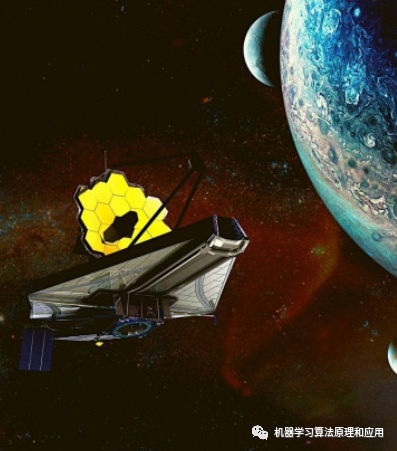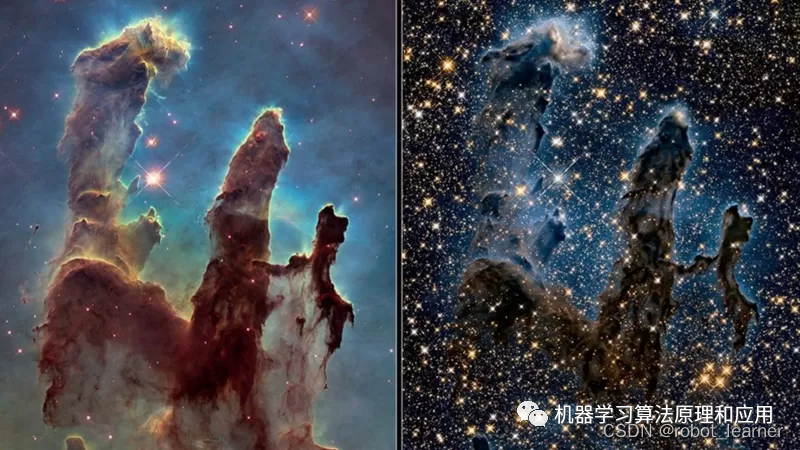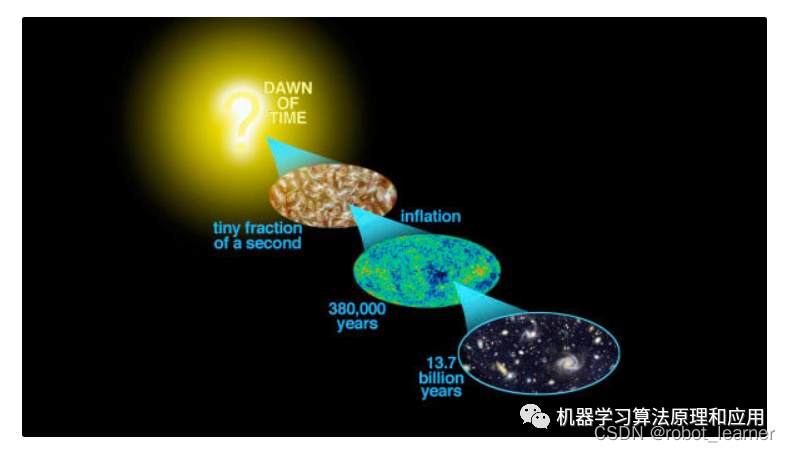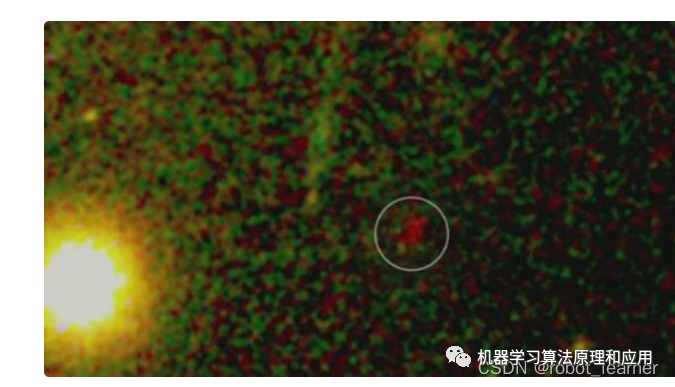
1. Why does the Webb Telescope fly so far?
The Webb telescope has been launched into space 1.5 million kilometers from Earth, a place known as the “Earth-Sun Lagrange L2 point”. The average distance between the moon and the earth is 380,000 kilometers, which is 4 times farther than the Webb telescope!
Hubble is a visible light telescope, basically what we see with the human eye is what the telescope captures; Webb is an infrared telescope, it mainly accepts light in infrared wavelengths - redder than red, a kind of invisible to our eyes” red”.
According to the theory of physics, all matter in the universe has a temperature and emits photons outward. Only objects that are hot enough to emit visible light outwards allow our eyes to see these photons. More objects emit infrared light, and we need infrared sensors to detect them.
The James Webb Telescope is a device used to detect cosmic infrared light. The sensors on it are extremely sensitive and can distinguish extremely small temperature changes, thereby detecting faint light from tens of billions of light-years away.
Just as we can’t see stars during the day, it’s not that the star isn’t there, but that the sun’s rays are so strong that its photons scatter in the atmosphere, drowning out the dim starlight. The Earth and Moon also emit infrared light, and the closer you get to Earth, the more it interferes with the Webb telescope. How to do it? Scientists should keep the telescope as far away from the Earth and the moon as possible, and block the sunlight with a heat shield to minimize the interference of thermal radiation.
So, is the Webb telescope sent to the L2 point of the Earth’s Lagrange because it is cold enough there? Not really.
Compared with the distance from the sun, the temperature difference caused by 1.5 million kilometers is almost negligible. On the one hand, the L2 point is selected because it can avoid the interference of the thermal radiation of the earth and the moon, and another important reason is that it is in a stable area between the sun and the earth. , the spacecraft can “float” here for a long time without consuming much fuel. Weber orbits the L2 point under the gravitational force of the earth and the sun.
2. Why does the telescope need to work in the infrared range?
Launched in April 1990, the Hubble Space Telescope is a groundbreaking generation of space telescopes.
In the past 30 years, the Hubble Space Telescope has provided us with the most important images of the universe, such as the famous Pillar of Creations and the nearly 10,000 objects known as the Hubble Ultra Deep Field. Image of galaxies.
The Webb telescope is designed to look beyond Hubble to see deeper into the universe.
Although Hubble is expected to continue working for another decade or two, Webb, with its more sophisticated equipment and design, is seen as a future successor to the mission of exploring space.
The main differences between Hubble and Webb are:
Hubble was designed to collect visible and ultraviolet light, with only limited infrared capabilities. The Webb telescope collects infrared light (IR);
The Hubble telescope is 2.4 meters in diameter, and the Webb telescope is 6.5 meters in diameter, and has a larger light collection area, which means that Webb can see deeper, farther and earlier than Hubble;
Hubble is orbiting very close to Earth, while Webb will be 1.5 million kilometers away. That’s four times the distance from Earth to the Moon.
The figure below shows that the same picture, infrared light can see more details.
3. Could infrared light allow us to see the beginning of the universe?

Hawking said the universe exploded from a point much smaller than an atom, and it took about 13.8 billion years of evolution to become what we see today.
Astronomers say Webb will examine the entire multibillion-year history of the universe – from the first stars to life in our solar system. NASA Administrator Bill Nelson called the telescope a “keyhole to the past.”
The Webb Space Telescope has a light-receiving area five times that of Hubble, and can work in the near-infrared range, with an observable spectral wavelength of up to 30 microns. This means that Webb can not only see the older galaxies, that is, the scene when the universe was 200 million years old, but also penetrate through the dust of the universe and see the mysteries behind it.
But why can see the past? Can time be turned back?
Simply put, because the universe is constantly expanding, and the speed of light has a limit, the light we see now from far away is actually the light emitted in the past. The distance that light travels in 1 year, called a light-year, is the unit of distance in the universe, and 1 light-year is nearly 10 trillion kilometers.
For example, the light emitted from the birth of a celestial body 10 billion light-years away from Earth will only be seen this year. Conversely, if the light we capture comes from an object 10 billion light-years away, it is an event that happened 10 billion years ago. The life of the universe is probably more than 13 billion years old, so if we can observe the light emitted by objects far enough away, we can see exactly what happened in the beginning of the universe.
The oldest known light in the universe is from the galaxy GN-z11. According to calculations, the galaxy is 13.4 billion light-years away from Earth.
The question is how do we know how far away the light we’re receiving comes from?
The answer is spectroscopic analysis! When we observe celestial objects, the spectral lines of the light they emit are not at standard wavelengths. The slope lengths of all spectral lines are lengthened, that is to say, the spectral lines move toward the red end. This phenomenon is called spectral line redshift, and it is caused by the Doppler effect.
As light changes over time and distance, its wavelength, or color, also changes. And this change is regular. When you see a train coming towards you, its color tends to be blue. Of course, this change is very small, and the human eye cannot distinguish it. This is called blue shift. If you see a train moving away from you, its color is more red, which is called a redshift. When scientists observe the universe, they find that almost all celestial bodies have red shifts, which is why they have the theory of the Big Bang. When you detect a beam of light, record its spectrum, measure its spectrum after a period of time, and know how far it comes from according to its changes.

